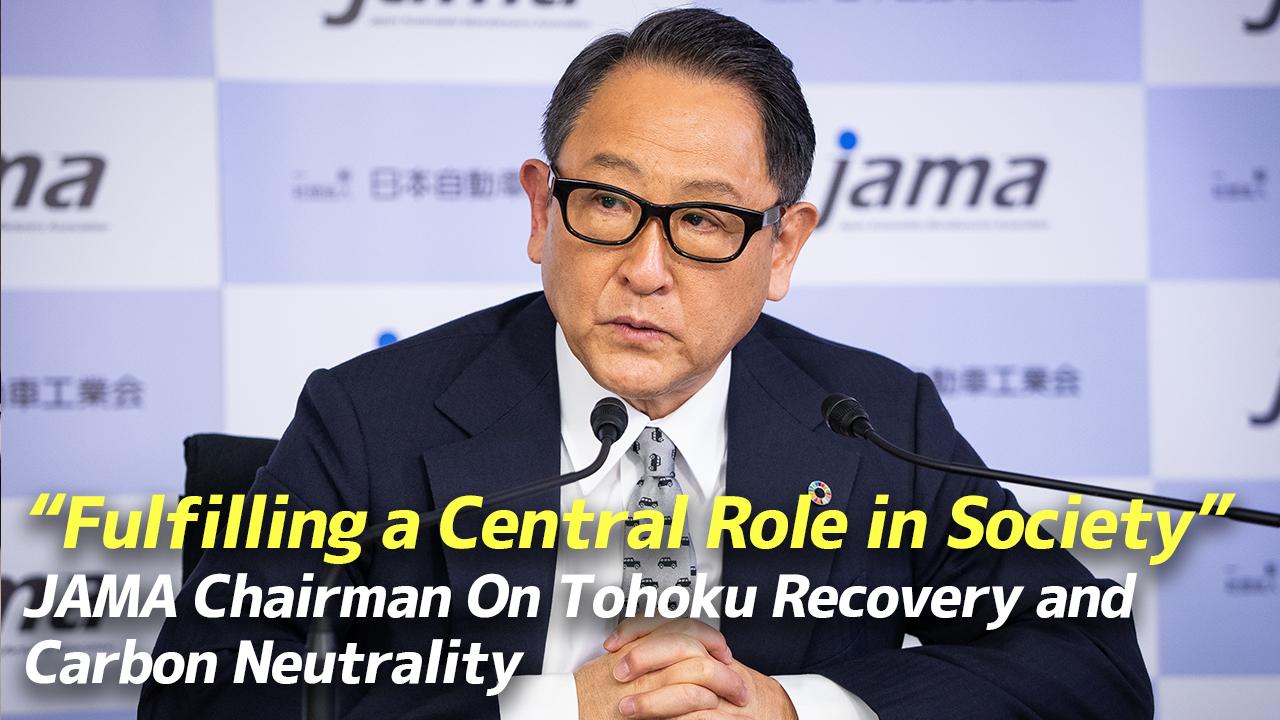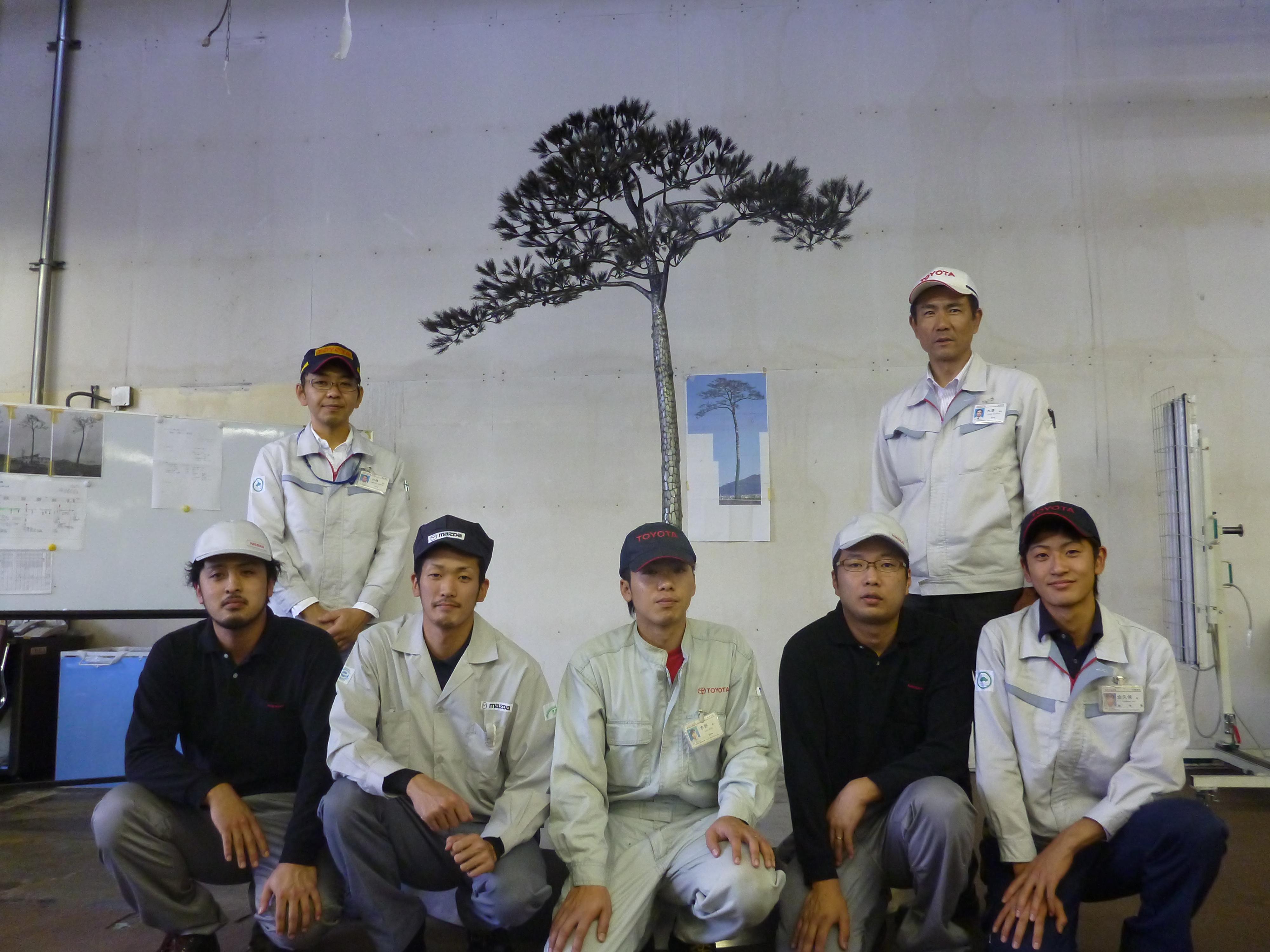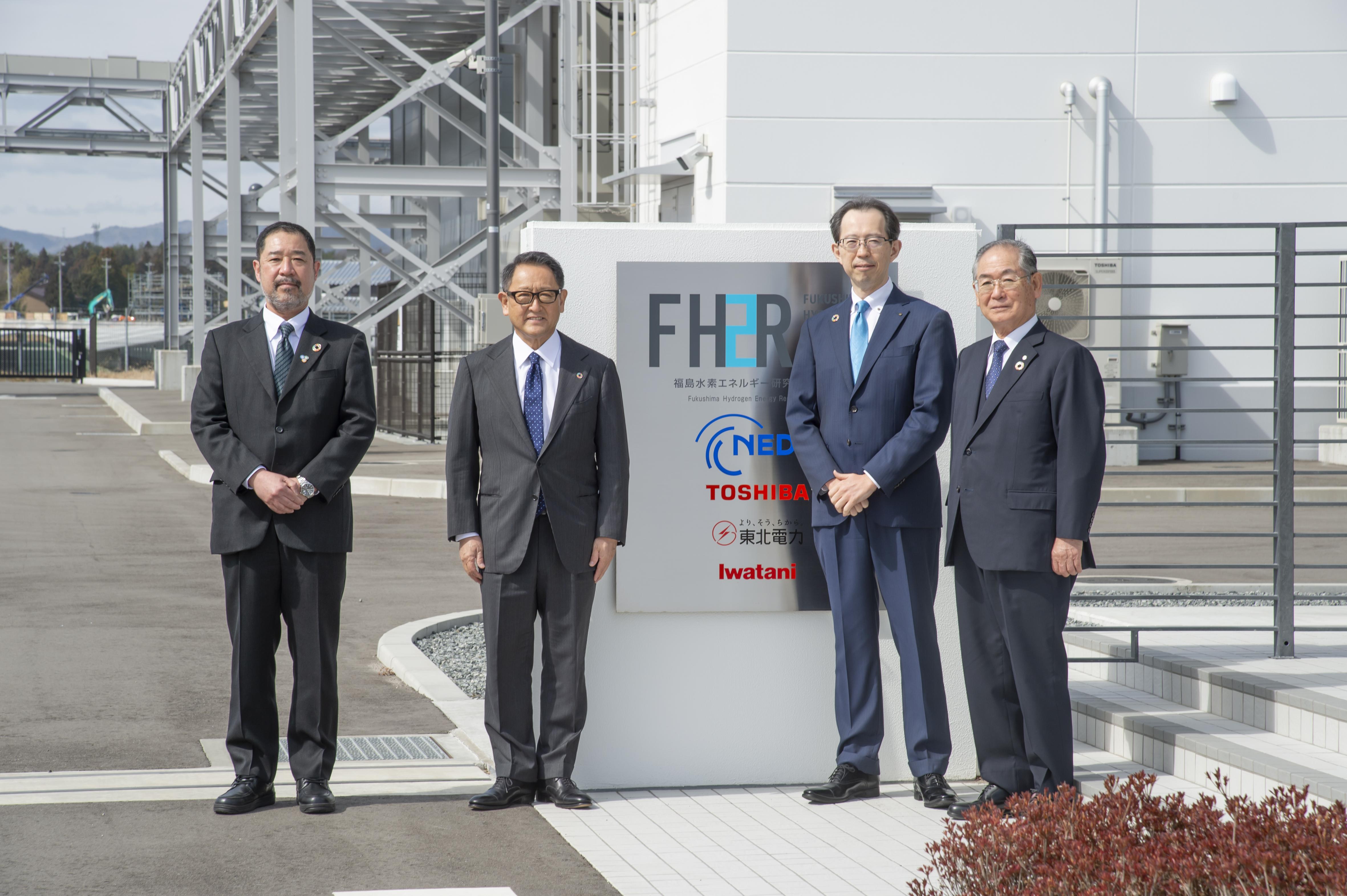
As Japan marked the 10th anniversary of the Great East Japan Earthquake, Akio delivered a message at the industry association's press conference. Toyota Times examines his remarks in its entirety.

On March 11, 2021, as the day marked the 10th anniversary of the Great East Japan Earthquake, Akio joined a press conference of Japan Automobile Manufacturing Association (JAMA) as the chairman.
In his remarks, he looked back on the past 10 years since the disaster to explain how the automotive industry has helped drive the recovery of Tohoku, while safeguarding employment and the foundation of manufacturing in Japan.
And looking to the future, Akio made clear the industry’s commitment to playing a central role in contributing to a carbon-neutral society, as is the case in Tohoku recovery, with 5.5 million people in the industry and beyond.
Through its business in making and selling cars, automakers generate employment, pay taxes and contribute to society. Now in view of carbon neutrality, the responsibility is becoming even greater.
As such, Akio’s message shows a huge responsibility that the automotive industry holds in any region and country. Below are his remarks in their entirety.
Becoming a driving force for recovery
JAMA Chairman Akio Toyoda Remarks
First, I would like to express my deepest sympathies to all those affected by the 2021 Fukushima Earthquake.
Today is the 10th anniversary of the Great East Japan Earthquake.
Ten years ago today, half of the Japanese archipelago was severely damaged, plunging us into the depths of despair.
At that time, the Japanese automotive industry was struggling against an extremely severe business environment known as the “Six Hardships”.
Due to a super-strong yen, with the yen-to-dollar exchange rate having settled in the 80-yen range, and power shortages caused by the earthquake, domestic manufacturing was forced into a difficult situation where it would make more sense to produce overseas.
While other industries shifted overseas, the automotive industry had to grit to successfully safeguard employment and the foundation of manufacturing in Japan.
I think that our sense of responsibility as a core industry and love of our home country was what propelled us.
At that time, there was an onslaught of statements about the automotive industry being mature and that a new industry was needed to replace it.
But the people of Tohoku were the exception.
Putting their hopes in the automotive industry, they put us right in the middle of recovery efforts.
We wanted, as well, for us to be a force for reconstruction no matter what. In 2013, under the banner of JAMA, engineers from various companies joined hands to reproduce the Miracle Pine Tree of Rikuzentakata City (in Iwate Prefecture) using sheet metal.
That was because we wanted to express hope for the future based on the power of manufacturing and deliver such to the people of Tohoku.

Creating the future together with the people of Tohoku through the automotive industry…
With this sentiment, that is what we have been doing for 10 years.
Nissan has continued to produce engines in Fukushima.
Toyota has positioned Tohoku as its third production base in Japan after Chubu (Central Japan) and Kyushu, building a foundation for automobile production, including an academy for cultivating talents in manufacturing.
And most importantly, numerous local companies have taken on the challenge of manufacturing automobile components.
As a result, automotive industry employment in Tohoku has increased by roughly 8,000 jobs, and the shipment value of automobiles and parts has increased by 800 billion yen.
Electrified vehicles claim the lion’s share of Tohoku automobile production, accounting for more than 80 percent of total vehicle output.
I believe that the automotive industry has firmly planted roots in the Tohoku region and, while doing so, has advanced environmental responses for the future.
Creating the future: Achieving carbon neutrality
Ever since the disaster, I have been visiting Tohoku every March. That includes this year, with my having visited Miyagi and Fukushima prefectures last week.

At a hydrogen production base in Namie Town, Fukushima Prefecture, a verification trial for the development of green hydrogen is steadily progressing under the leadership of Prime Minister Suga.
To realize a hydrogen-based society, it is important to connect all the processes of making, transporting, and using.

I hope that the automotive industry, which is on the transporting and using sides, will apply the knowledge it has thus far gained to more deeply engage in the national and Fukushima Prefecture’s efforts.
Governor Masao Uchibori of Fukushima Prefecture and Mayor Kazuhiro Yoshida of Namie Town told me that the population of Namie Town once bottomed out at zero due to the nuclear accident.
They said that damage due to misinformation continues and that they want to not only bring back normal daily life but also create the future there.
I believe that it is the automotive industry’s task to realize the future of a carbon-neutral society together with everyone in Tohoku.
That is why I want the automotive industry to fulfill a central role in carbon neutrality as well.
To achieve carbon neutrality, energy policy and industrial policy must be considered as a set.
Many hurdles must be overcome. Many industries are under pressure to change. The same applies to our daily lives.
However, Japan has an automobile industry that has a full lineup of electrified vehicles and energy-saving technologies as its strengths.
Our colleagues who have supported mobility in Japan even during the ongoing COVID-19 pandemic number 5.5 million.
Also, there are customers in Japan who actively welcome electrified vehicles and help them develop.
And there are companies and people who act with consideration toward the future and the next generation.
With everyone aligning their strengths, I would like us to create the future of Japan together.
Together with our 5.5 million colleagues, we will continue to make concerted efforts for the future of Japan, and we would humbly appreciate your kind support.
Thank you very much.
One of the questions from reporters at the following Q&A session was about what Akio meant by saying that he wants the automotive industry to “fulfill a central role in carbon neutrality.”
This is a part of how Akio responded.
JAMA Chairman Akio Toyoda:
Today is coincidentally the March 11th. Ten years ago, I felt useless about myself, having seen that half of the Japanese archipelago was severely damaged.
At the same time, it was also the time we thought about becoming a driving force for recovery and sparing no efforts to preserve monozukuri in Japan.
Ten years later, a new challenge has emerged in a different form and with an even greater impact. That is how I see the challenge of carbon neutrality.
We are now facing a turning point that may determine whether we can preserve monozukuri in Japan in the future. I want everyone to understand this.
Achieving a carbon-neutral society is a national project in which everyone in the country is involved.
The more difficult the challenge is, the more responsibility the automotive industry should hold. Having driven the economy in the last 10 years after the natural disaster, this resolution seemed even stronger in Akio’s mind.

